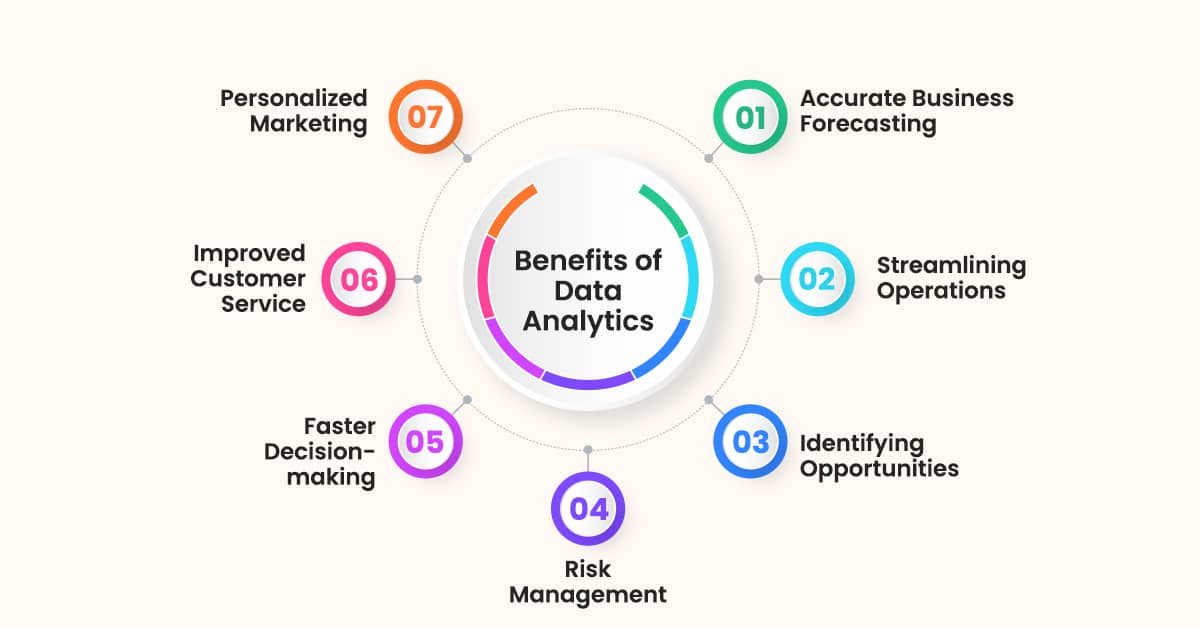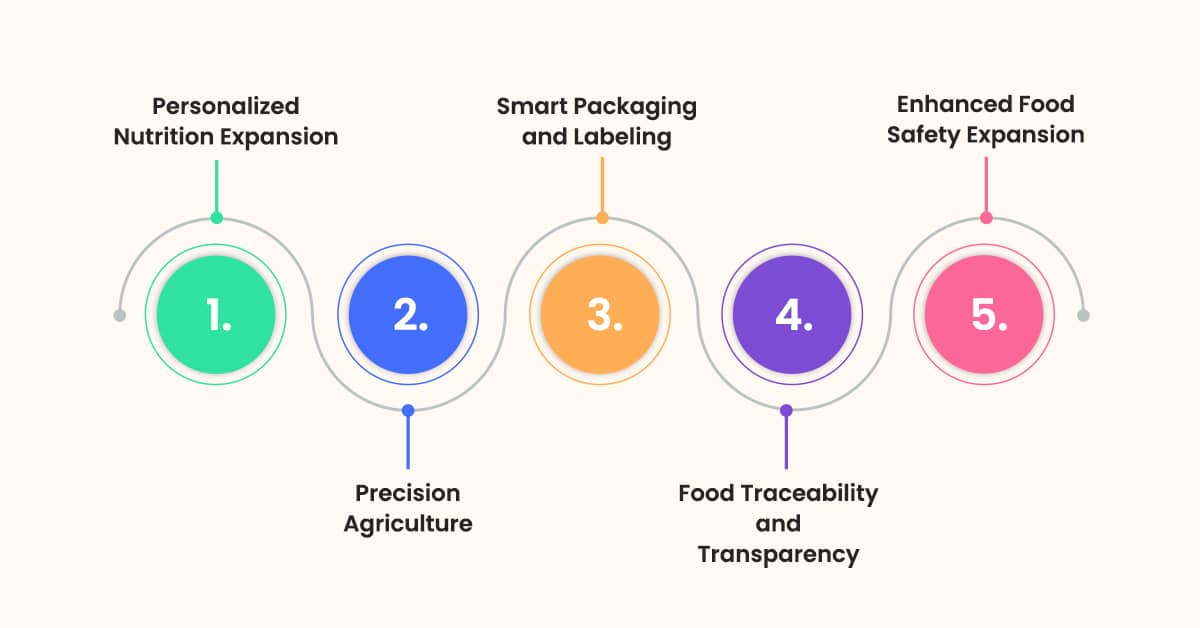How Data Analytics Transforms Food Industry Operations?
Data analysis is crucial for all diverse business segments to ensure a strategic decision-making process. Data can significantly enhance business decision-making in the beverage and food industry. Decision-making has grown increasingly complicated in recent years, with 65% of decisions now being more intricate than they were two years ago, according to a Gartner survey. Quick and well-organized decision-making processes are a top priority for many organizations since they maximize market positions and yield high returns.
Foodspark helps diverse food businesses understand the market shifts that help them stay competitive. This is mainly because of a shortage of up-to-date and trustworthy information. The beverage and food sector has gone through diverse changes. As a result, business managers have shifted to minimizing their product quantity without changing the price.
What is Data Analytics in the Food Industry?
Business Data Analytics is the process of applying an organization’s data to a strategy to make the data more intelligible and helpful for making practical decisions. It allows organizations to be more flexible, thus allowing management to think fast as well, giving them the leading market edge. Data analytics is the study of data, in which companies can capture hidden patterns and trends through the analysis of their mass of data. In this way, they can respond to market challenges without much delay and get used to short-term markets.
In the food industry, data analysis methods generally involve applying assistive tools to garner, interpret, and use datasets intelligently. It is a tool that assists food businesses to make intelligent choices and pay closer attention to what they do. Hence, this technology will be an essential part of the entire food system, including agriculture, supply chain, market, and consumer lifestyle, and will be successful in every process. Through statistics analytics, a core part of production, companies can develop and start with lower production costs, efficient operations, and products that are market-safe and of great quality. To learn, they should consider how making food works, what can be done better, and what cannot be wasted.
Companies can boost their sales and market share by using data to understand the needs of their potential customers. This leads to discovering the products they need and the advertising methods that might charge them extra for buying or delivering them.
Benefits of Data Analytics in the Food Industry

Through data analytics, companies can find new opportunities, work more efficiently, and succeed in their industries. The benefits of data analytics in the food industry are mentioned below:
Accurate Business Forecasting
Food businesses can make predictions about future trends more accurately by analyzing past data. By controlling how much they make and predicting what customers will need, businesses can avoid making too much or running out of stock. This helps them save both money and time.
Streamlining Operations
Through data analysis, food companies can pinpoint inefficiencies in their operations and optimize processes to improve overall efficiency. This can be figuring out where there is overspending or optimizing supply chain operations to cut expenses and boost revenue.
Identifying Opportunities
Data analysis allows businesses to discover unnoticed fields of success and development that were not considered before. Companies often use the information to find possible new customers or introduce innovative products to take advantage of expanding market opportunities.
Risk Management
Data analytics promotes both foresight and risk prevention, which are crucial safety pillars of any business. Businesses can get ready for problems by keeping an eye on how customers act and what’s happening in the market. This helps them keep going and stay open for business.
Faster Decision-making
Having the capacity to obtain data and real-time analytics tools at their disposal, food businesses can make better decisions faster. Thanks to this agility, businesses can immediately respond to any market changes. Hence, they are in a better position to harness any emerging opportunities, which will enable them to compete favorably with other businesses in the industry.
Improved Customer Service
This allows food businesses to evaluate and use customer feedback and preferences to improve their service delivery and thus satisfy customer expectations. For example, the brand could choose to resolve problems in a satisfactory manner or make the interactions more personal, thus creating a more favorable customer experience.
Personalized Marketing
Data analytics enables businesses to create targeted marketing campaigns tailored to individual customer preferences. Customized deals and suggestions assist businesses in increasing sales and keeping customers more involved.
Use Cases of Data Analytics in the Food Industry
Companies can see how their actions and projects are doing, find ways to do better, and change their plans as needed. This keeps the company thinking creatively and learning, leading to continuous improvement. Let’s explore how beverage and food businesses utilize data analytics to improve decision-making:
1. Supply Chain Optimization:
Data analytics ensure the smooth work of an entire food supply chain. They accomplish that by considering how many products are in stock, how long they will be kept in the warehouse, the best way to deliver products, and how the suppliers are doing. By locating where things are done more efficiently and where there are unnecessary expenditures and delivery failures, they can make their operations smoother, spend less money, and ensure timely deliveries.
2. Quality Control and Food Safety:
Data analytics can be a tool for the food industry to keep its food on the highest level of safety and taste. They employ a number of detecting devices and machines to monitor how food is processed. Such monitoring also involves the scrutinizing of the entire supply chain. They just have to take a small bite if something doesn’t taste good. They will correct the problem immediately to prevent illness outbreaks, and only edible and quality food will be served.
3. Demand Forecasting and Inventory Management:
Using data analysis, food businesses can decide on what consumers expect and ensure they have the right amounts of food without being overstocked. By considering what people were buying previously near the store and also taking a look at other relevant market trends, they can ensure they have enough of everything to always be ready for the forthcoming without excess spoilage or running out of stock.
4. Product Development and Innovation:
Data analytics is the perfect tool for food manufacturers to collect consumer feedback and insights, which they use to base their product development and innovation processes. By examining customer feedback, market trends, and competition, companies will be able to see product opportunities that have yet to be discovered, improve on what is already there, and be proactive about consumers.
Future Trends in the Food Industry with Data Analytics

Data analytics in beverage and food ensures that personalized marketing is considered the better approach for focusing on fresh opportunities. So, it is essential to analyze future trends in the food industry with data analytics:
1. Personalized Nutrition Expansion:
Imagine a nutrition plan designed just for you, tailored to fit your unique needs. With the magic of data analytics, companies dive deep into your genetic makeup, lifestyle choices, and favorite foods to craft a personalized diet plan that suits you perfectly. In the changing era, making custom approaches and enjoying meals that taste great and support individual health and wellness goals becomes easy.
2. Precision Agriculture:
With continuous analytics, ensuring farming will become one of the most important agricultural practices in the coming years. Through the data gathered from sensors, drones, and satellite imagery, farmers can make evidence-based choices on agricultural techniques, irrigation, and pest control, which can eventually end in better productivity, lesser ecological footprint, and better sustainability.
3. Smart Packaging and Labeling:
Using the latest data analytics, smart packing and labeling would be possible, which would, in turn, provide consumers with real-time information on the freshness, quality, and nutrition of food products. This includes QR codes, RFID tags, and sensors that follow the products and their movements and conditions throughout the Supply chain.
4. Food Traceability and Transparency Expansion:
Data analytics and cutting-edge technologies can allow you to trace every stage of that trip. Transparency reigns supreme, from the fields where it grows to the shelves where it is sold. With this degree of awareness, you can be confident that the food on your plate is both consumer feedback and insights with each mouthful.
5. Enhanced Food Safety Expansion:
Keeping our food supply secure is critical, and data analytics plays an essential part in accomplishing this aim. Organizations may detect and control polluting situations through different measurements that enable them to, for example, track the data from the sensors and inspections. High food safety standards will be achieved if early detection and preventative measures are applied. This means that all food items inside the premises will be nutritious and safe to eat.
Conclusion
Digital transformation influences diverse industries, including food service and beverage production. Companies tend to be heavily data-leaning for collecting food data, finding the right audiences, and continuing to be profitable. Businesses can effectively anticipate demand, explore new opportunities for development, and adjust product portfolios according to changes in customer preferences. The horizon for innovation and progress is boundless, from the tailored nutrition programs that follow individual lines to sustainable methods of cultivation that ensure good ecology.

.png)

Comments
Post a Comment